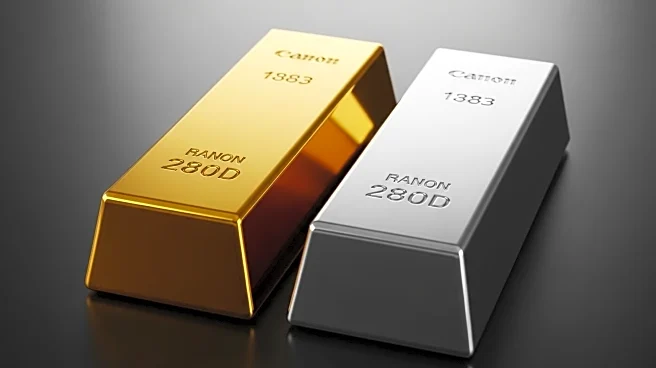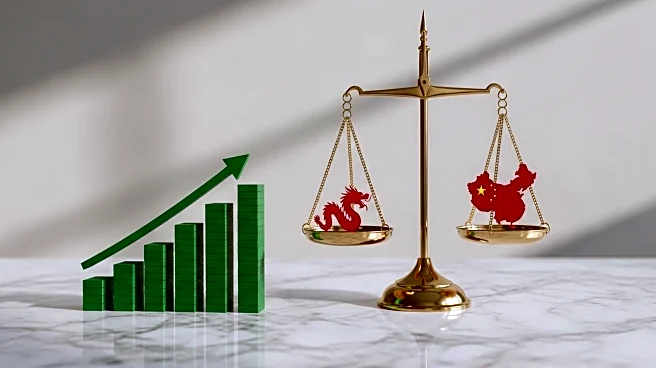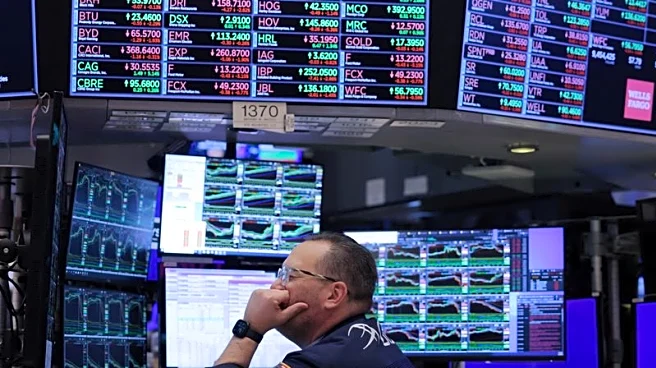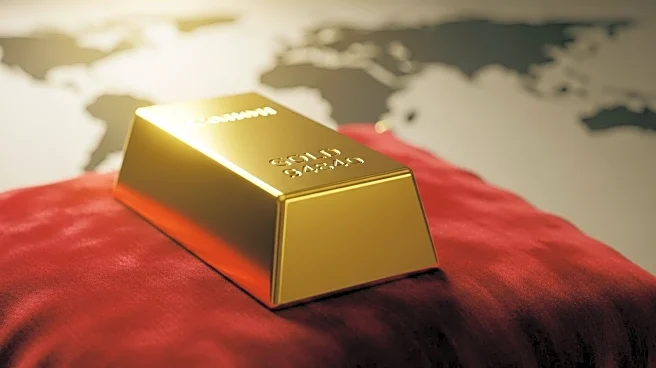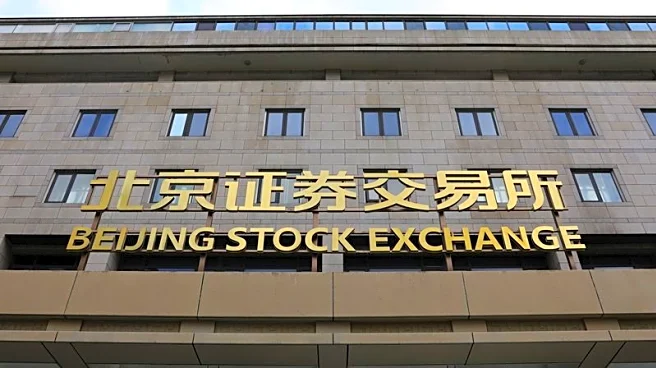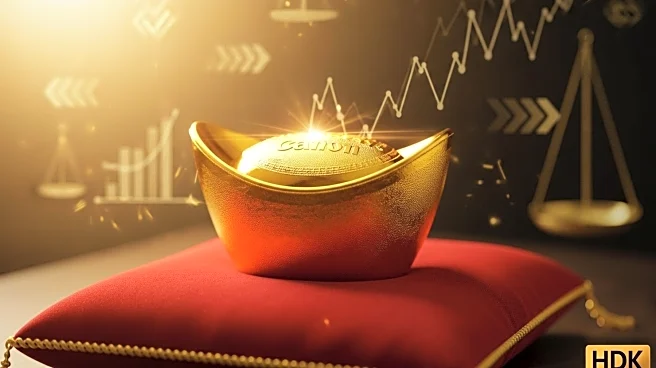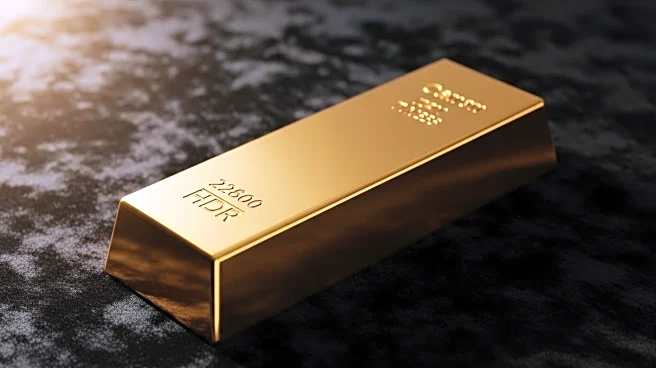What's Happening?
Gold prices have reached a record high, climbing above $4,100 per ounce, driven by increased speculation of U.S. Federal Reserve rate cuts and ongoing U.S.-China trade tensions. Spot gold rose 1.3% to $4,162.31 per ounce, while U.S. gold futures for December delivery increased by 0.9% to $4,171. The surge in gold prices, which have risen 58% year-to-date, is attributed to geopolitical and economic uncertainties, strong central bank buying, and robust exchange-traded fund inflows. Analysts from Bank of America and Societe Generale predict gold could hit $5,000 by 2026. Silver also reached an all-time high, with spot silver jumping 1.1% to $53.13 per ounce. The Philadelphia Federal Reserve chief, Anna Paulson, indicated that rising risks to the labor market support further interest rate cuts, with traders pricing in a high probability of rate cuts in October and December.
Why It's Important?
The record high in gold prices underscores the impact of economic and geopolitical factors on safe-haven assets. As investors seek stability amid uncertainty, the demand for gold and silver has increased, reflecting concerns over potential rate cuts and trade tensions. The Federal Reserve's potential interest rate cuts could lower long-term funding costs, making non-yielding assets like gold more attractive. This trend highlights the broader implications for financial markets, where investors are adjusting strategies based on anticipated monetary policy changes. The ongoing trade tensions between the U.S. and China further contribute to market volatility, influencing commodity prices and investor sentiment.
What's Next?
Investors are closely monitoring upcoming events, including Federal Reserve Chair Jerome Powell's address at the NABE annual meeting, which may provide further insights into the Fed's rate cut trajectory. Additionally, President Trump's planned meeting with Chinese leader Xi Jinping in South Korea could impact trade negotiations and market dynamics. The U.S. federal government shutdown, now in its 13th day, is also affecting the economy, adding another layer of complexity to the financial landscape. These developments will likely continue to influence gold and silver prices, as well as broader market trends.
Beyond the Headlines
The surge in gold prices may have long-term implications for investment strategies, as investors increasingly turn to safe-haven assets amid economic uncertainty. The potential for further rate cuts and trade tensions could lead to sustained demand for gold and silver, impacting commodity markets and influencing global economic policies. Additionally, the ongoing government shutdown highlights the vulnerability of the U.S. economy to political disruptions, which could have lasting effects on investor confidence and market stability.


